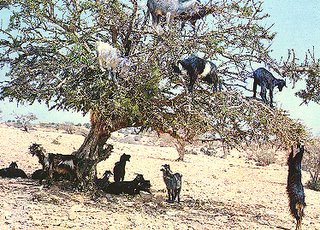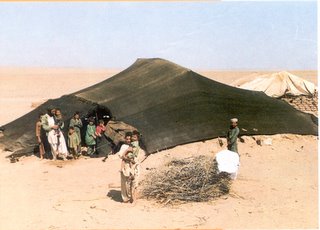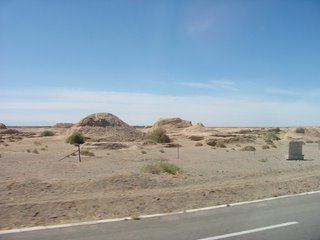SHELTERBELTS FOR FARMLAND-(3)
3.2.1 Concept and calculating method
When wind direction is vertical to a forestbelt, a ratio which is about a average wind speed under places of a forestbelt height at leeward of forestbelt fringe to a average wind speed under the same height in wildness is called ventilating wind coefficient, d0 stands for the ratio; “U” stands for a average wind speed in time, “[U]”stands for a average count of U in space, so a formula is following:
(1/H∫0HU(z)dz) [U]
d0 = =
(1/H∫0HU0(z)dz) [U0]
In this formula U (z) stands for a average wind speed at forest fringe in leeward forestbelt, U0(z) stands for a average wind speed in wildness, both of them are function of height “z”.
Practically, like the density of penetrating sunshine spaces, average wind speeds of 3-5 height instead of average wind speed U(z) in time and space. Individually, d1, d2, d3 stand for ventilating wind coefficient of upper layer, middle layer and lower layer of a forestbelt, A, B and C respectively, stands for thickness of every forest layer, H stands for the average height of a forest belt. The ventilating wind coefficient can be attained with the formula:
d0 = (d1* A + d2* B + d3*C )/H
3.2.2 The ventilating wind coefficient, forestbelt structure and windbreak effect
The ventilating wind coefficient is an important parameter. Usually, it is as an index to judge merit and demand a forestbelt structure. The relation between the ventilating wind coefficient and windbreak effect is similar to the density of penetrating sunshine spaces.
In north China, the best ventilating wind coefficient of shelterbelts for farmland is 0.5-0.6.
3.3 Forestbelt width
Many experiments and practices in China and in former Soviet Union show that windbreak effect is influenced by forestbelt widths. When the ratio of a forestbelt width to height are smaller, the influence isn't too clear. However, a ratio about width of a forestbelt to height of forestbelt ³5, the influence occurs clear. When there is a proper density of penetrating sunshine spaces (or ventilating wind coefficient), a forest width can be adjusted in a big scale. A better windbreak effect can be got from several lines to tens of lines. Shelterbelts for farmland in the west area of northeast China are generally adapted 6-12 lines. Width is 9-18m, in Xinjiang area is often planted 4-8 line, width is 6-12m. A better windbreak effect is gained; Hexi area of Gansu province is 2-4 lines, 3-6m wide. Of course, the narrower the forestbelts and also the shorter the distance between forestbelts, the better are the protective effect.
3.4 Forestbelt height
Generally, an absolute value of windbreak distance of forestbelts becomes bigger with increasing of forestbelt height, and is direct ratio. So, the forestbelt designing should select some high tree species. Effective windbreak distance of forestbelts is often expressed by multiples of tree height (for example 20H, it is 20 times of forestbelt height). Forestbelt height doesn't have a clear influence on relative value for forestbelt protective distance.
3.5 Forestbelt cross section
Table 2: Windbreak effect of cross-section forms of forestbelts
Single line density of penetrating sun shine spaces on cross section
Lines
Sheltered distance(H)
decreasing Percentage of wind speed(%)
When shelterbelts for farmland are planted, because of differences in tree species and planting patterns of arrangement, they form some different cross section shapes of forestbelts. Common shapes are rectangle, triangle (equilateral or inequilateral triangle), ridge (symmetry or no symmetry), trapezoid, cancavity, etc. When other features of a forestbelt are the same, cross-section forms of a forestbelt are not the same; windbreak effectiveness has more differences obviously. Chinese scientist, Prof. Cao Xinsun, used bamboo material with heights of 1-1.8m and diameter of 2cm. 24 bamboo was planted per meter, 5 kind of forestbelt models of 7 lines was made, and the data are obtained on windbreak experiments (table 2).
On comparison of result of five different cross sections, the rectangle was founded to be the best, not only in decreasing average wind speed, but also in increasing windbreak distance. Second, is cancavity form. Finally, we can get a result in cross section forms about forestbelts; the rectangle is the best one.























